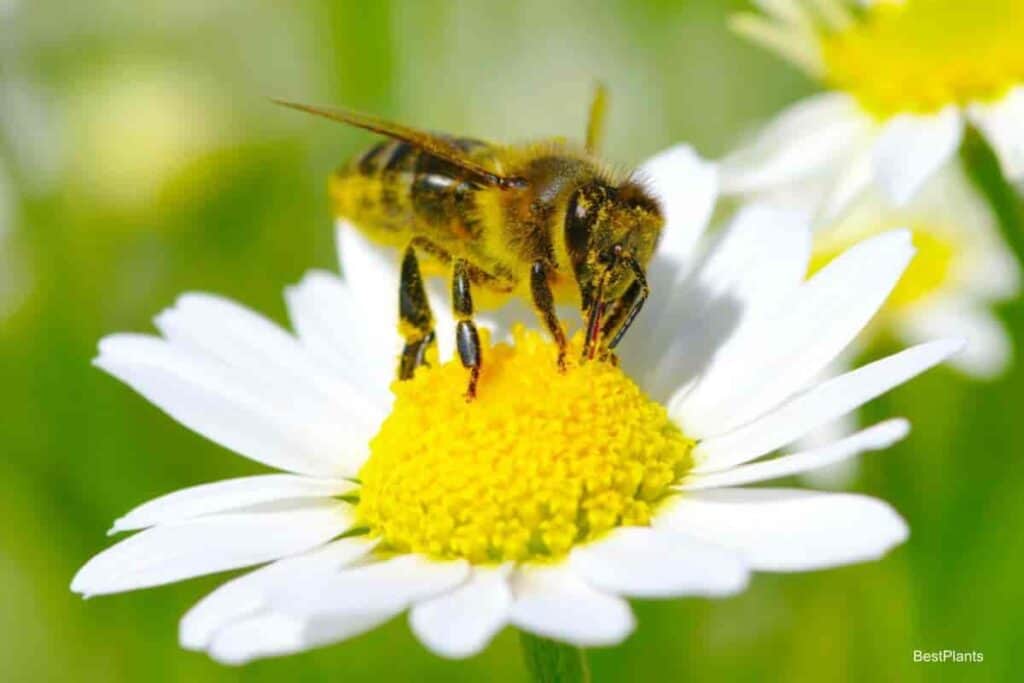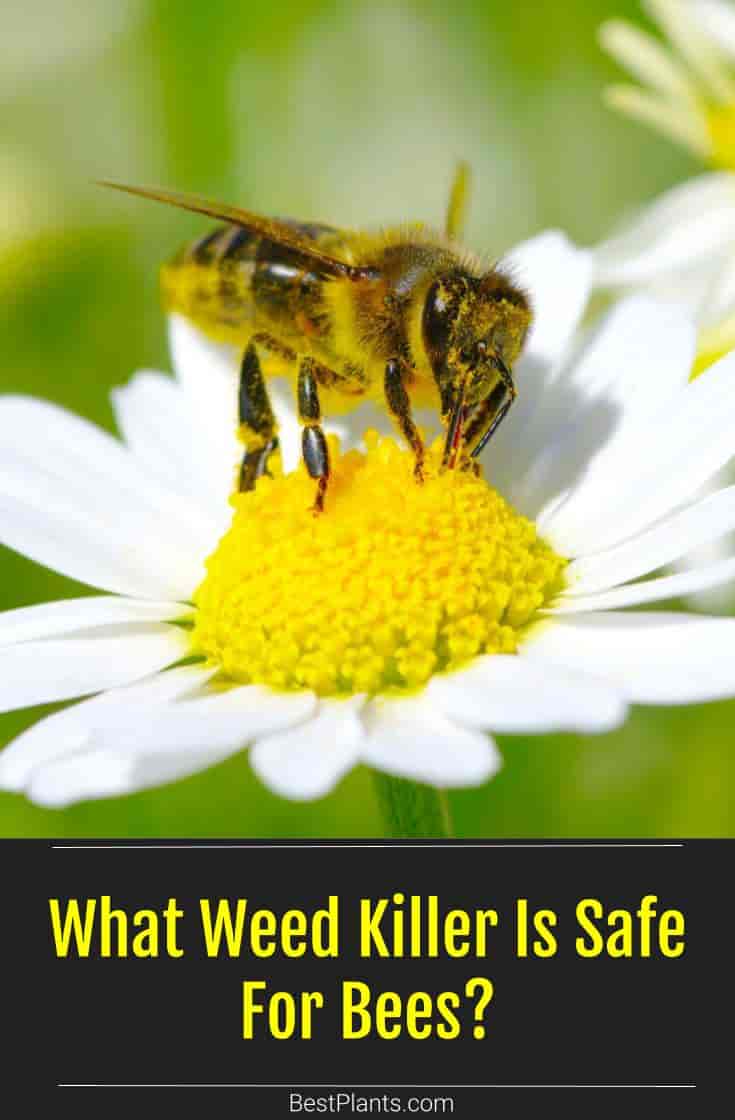Many weed killers are deadly to bees. Among them are herbicides containing glyphosate, the main ingredient in Roundup.
Other herbicides toxic to bees include Dicamba products and even natural concoctions containing vinegar.

Safer herbicides include those containing Atrazine and 2,4-D.
How Do Herbicides Harm Bees?
Some herbicides kill bees on contact. Yet, many herbicides don’t immediately hurt bees. Instead, they can have far-reaching, devastating effects when carried back to the hive.
First, bees collect pollen laced with herbicide. They then incorporate it into the food sources for their young.
Those herbicides can destroy entire generations of bees and cause hive collapse.
How Can You Control Weeds Without Harming Bees?
Keep in mind that controlling weeds is not the same as killing weeds.
Bees like weeds. Many weeds produce flowers that are very beneficial to bees and other pollinators.
Additionally, many weeds are rather attractive and quite helpful to people.
Learning to identify the volunteer plants in your yard is one step you can take toward controlling weeds without harming pollinators.
There may be many weeds that you can corral, mow, and otherwise learn to live in harmony. Generally speaking, it’s never good to broadcast poisons over your yard and garden.
Deal with overbearing, invasive, and potentially toxic weeds on a case-by-case basis. Be aware of what you are dealing with and choose and use products carefully and effectively.
What Weed Control Techniques Are Safest For Bees And Other Pollinators?
Add these weed management methods to your regimen to minimize the impact on pollinators:
- Pull weeds by hand as soon as you see them emerging.
- Mulch around garden plants to prevent weeds from getting a foothold.
- Apply granular, pre-emergent herbicide under mulch where it will not come in contact with bees.
- Use pre-emergent herbicides a couple of times a year (mid-autumn and early spring).
- Use the English garden style of planting, with close spacing, to crowd out weeds.
- Target individual weeds with sprayed or painted-on applications of bee-friendly products. Try Atrazine, 2,4-D, or bee-friendly homemade products.
- Apply herbicides early in the morning, at dusk, or even at night to avoid bees contacting the products.
- Choose the least toxic commercial herbicide formulas possible.
- Use mowing for weed control. Regular mowing and lawn care will prevent weed growth.
- Keep your grass a little long and very thick. A healthy, dense strand of grass will repel weed seed and prevent it from growing.
How Do You Make Bee-Safe Herbicides?
Several simple homemade herbicides are used to control weeds with little or no harm to bees.
One such homemade foliar herbicide uses a gallon of white vinegar, a cup of table salt, and a tablespoonful of dish soap. Mix these ingredients in advance and store them in a cool, dark place.
Apply the concoction using a sprayer or paintbrush to individual plants you wish to kill. You will probably need to apply it several times to kill the offending weeds completely.
Don’t spray this mixture widely. It will damage everything it touches.
Use it in the very early morning or evening hours when bees will not come in contact with it. It is not as deadly as glyphosate but can still harm bees and other beneficial insects on contact.
Another alternative is corn gluten, a natural by-product of corn milling. Apply it as you would granular pre-emergent herbicide on your lawn or garden.
Create A Pollinator-Friendly Yard
Learn about and welcome native blooming plants. This is an innovative way to plan and maintain a beautiful yard and garden space.
It also encourages bees and other pollinators to visit, survive and thrive.
Generally speaking, native plants are far less labor-intensive than lawns to grow and care for.
Even if you only have a small space for plants, you can make a big difference in supporting the health and well-being of bees and other pollinators. They are essential to the health and well-being of the world around us.
